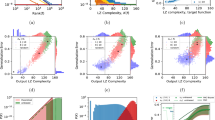Abstract
Classification of Boolean functions requires specific software or circuits to determine the class of a function or even to distinguish between two different classes. In order to provide a less costly solution, we study the approximation of the NPN function classification by a artificial neural network (ANN), and shown that there are configurations of ANN that can perfectly classify four-bit Boolean functions. Additionally, we look at the possibility of learning the classification of four-bit Boolean functions using a set of three-bit Boolean neural classifiers, and determine the scalability. Finally we also learn a discriminator that can distinguish between two functions and determine their similarity or difference in their NPN classes. As a result we show that the approximate neural function classification is a convenient approach to implement an efficient classifier and class discriminator directly from the data.
Access this chapter
Tax calculation will be finalised at checkout
Purchases are for personal use only
Similar content being viewed by others
References
Debnath, D., Sasao, T.: Efficient computation of canonical form under variable permutation and negation for Boolean matching in large libraries. IEICE Trans. Fundam. Electron. Commun. Comput. Sci. E89–A(12), 3443–3450 (2006)
Edwards, C.R.: The application of the Rademacher-Walsh transform to Boolean function classification and threshold logic synthesis. IEEE Trans. Comput. 100(1), 48–62 (1975)
Guliyev, N.J., Ismailov, V.E.: Approximation capability of two hidden layer feedforward neural networks with fixed weights. CoRR abs/2101.09181 (2021)
Harrison, M.A.: On the classification of Boolean functions by the general linear and affine groups. J. Soc. Ind. Appl. Math. 12(2), 285–299 (1964)
Hurst, S.L.: The Logical Processing of Digital Signals. Crane Russak & Company Inc., Edward Arnold, New York, London (1978)
Lukac, M., Moraga, C., Kameyama, M.: Properties of bent functions in the truth domain. In: 2019 International Conference on Information and Digital Technologies (IDT), pp. 304–310 (2019)
Mhaskar, H., Liao, Q., Poggio, T.A.: Learning real and Boolean functions: when is deep better than shallow. CoRR abs/1603.00988 (2016)
Oliveira, A.L., Sangiovanni-Vincentelli, A.: Learning complex Boolean functions: algorithms and applications. In: Proceedings of the 6th International Conference on Neural Information Processing Systems (NIPS 1993), p. 911–918. Morgan Kaufmann Publishers Inc., San Francisco (1993)
Sadohara, K.: Learning of Boolean functions using support vector machines. In: Abe, N., Khardon, R., Zeugmann, T. (eds.) ALT 2001. LNCS, vol. 2225, pp. 106–118. Springer, Heidelberg (2001). https://doi.org/10.1007/3-540-45583-3_10
Sasao, T.: Switching Theory For Logic Synthesis. Cluver Academic Publishers, Boston/London/Dordrecht (1999)
Tavares, A.R., Avelar, P., Flach, J.M., Nicolau, M., Lamb, L.C., Vardi, M.: Understanding Boolean function learnability on deep neural networks (2020)
Tsai, C.C., Marek-Sadowska, M.: Boolean functions classification via fixed polarity reed-muller forms. IEEE Tran. Comput. 46(2), 173–186 (1997)
Author information
Authors and Affiliations
Corresponding author
Editor information
Editors and Affiliations
Rights and permissions
Copyright information
© 2022 The Author(s), under exclusive license to Springer Nature Switzerland AG
About this paper
Cite this paper
Lukac, M., Podlaski, K., Kameyama, M. (2022). Approximate Function Classification. In: Groen, D., de Mulatier, C., Paszynski, M., Krzhizhanovskaya, V.V., Dongarra, J.J., Sloot, P.M.A. (eds) Computational Science – ICCS 2022. ICCS 2022. Lecture Notes in Computer Science, vol 13351. Springer, Cham. https://doi.org/10.1007/978-3-031-08754-7_28
Download citation
DOI: https://doi.org/10.1007/978-3-031-08754-7_28
Published:
Publisher Name: Springer, Cham
Print ISBN: 978-3-031-08753-0
Online ISBN: 978-3-031-08754-7
eBook Packages: Computer ScienceComputer Science (R0)




